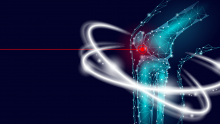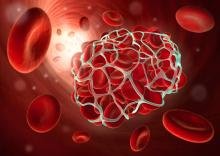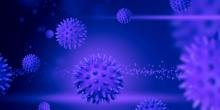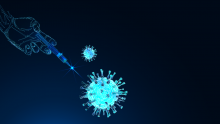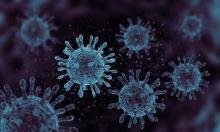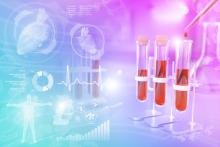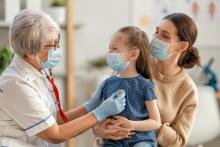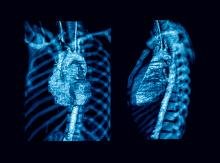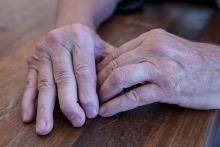COVID-19 vaccines are the most important scientific response to the global threat posed by the pandemic.
Most vaccine options currently fighting the disease are very novel and although data related to their application can be quickly obtained, it is a field of never ending evolution and requires nonstop revisions in order to keep ourselves up to date about any doubts that arise in the medical corpus, among the general population and, in the case of our specialty, among patients with rheumatic diseases of autoimmune origin.
The success achieved by mankind in being able to produce COVID-19 vaccines in record time, requiring the strong will and economic support of the wealthiest countries, as well as previous scientific knowledge forged over years, quickly and efficiently applicable in order to solve such a global problem, is, to say the least, astounding.
Nevertheless, there is a lot of concern surrounding COVID-19 vaccination, doubts and questions about that very same record time in which vaccines were produced and about the technologies implemented in each one of them. In addition, there is also palpable pressure around the need for information on managing patients with underlying diseases and ongoing treatments.
In addition, to all this large, necessary amount of scientific information, we must add fake news, a subject previously addressed in this magazine (1), whose ability to spread rapidly has created an additional layer of unnecessary doubt in many parts of the world regarding the efficacy of immunization.
Having said this and based on accurate data from reliable sources, this article (parts 1 and 2) will review the information and evidence known to date. We will emphasize the considerations that should be considered in cases of patients with autoimmune rheumatic diseases, and we will review the guidelines, recommendations and research that different societies and institutions have developed on this subject, bearing in mind that accurate information is key to understand all aspects of immunization and the specifics of each patient.
We will also go through the importance of vaccines on public health globally over the years, the analysis of biologics, the platforms developed to address COVID-19, and the evidence that currently exists regarding the relationship of these vaccines and patients with autoimmune diseases from the perspective of shared decision making. This analysis will be updated as new data and research become available to address concerns and make decisions.
To start, let’s keep in mind that the decision to vaccinate should ideally be made between the patient and his or her physician, after discussion about biologic specifics, special aspects to be reviewed in each case, modifications to each treatment - if needed - and all the questions that should be answered by the specialists.
THE SUCCESS OF VACCINATION
Nowadays, many diseases that caused thousands of deaths, have disappeared and the reason for that? Well, vaccines.
On May 14, 1796, Edward Jenner took material from a pustular lesion of cowpox (caused by the "cowpox" virus) from the hand of milkmaid Sarah Nelmes. He then inoculated it into the arm of James Phipps, an 8-year-old son of the Jenner family gardener. Two months later, he inoculated material from a lesion of a smallpox patient and demonstrated that James did not contract the disease, claiming that he had become "immune" (2). And just like that, the way of handling with this disease had changed forever, and along with it, scientific research on immunization was expanded. Smallpox is the only disease officially eradicated from the planet and it was so thanks to vaccination. In 1980, the WHO certified this achievement (3).
At the end of the 1960s, smallpox was still endemic in Africa and Asia. Vaccination campaigns, surveillance and prevention measures set to contain outbreaks, as well as better information provided to affected populations, were the strategies used to overcome the disease (4).
Further that road, the last patient with poliomyelitis in Latin America and the Caribbean was reported n 1991. The disease reappeared briefly in 2000, when 20 vaccine-associated cases were reported in Haiti and the Dominican Republic. In 1994, the Region of the Americas was certified as free of autochthonous wild poliovirus (4).
In addition, the Pan American Health Organization (PAHO) indicates that "on April 22-23, 2015, the International Committee of Experts (ICE) for documentation and verification of the elimination of measles, rubella and congenital rubella syndrome in the Region of the Americas, reviewed epidemiological data submitted by Member States and concluded that endemic rubella transmission had been interrupted in the region. The last confirmed case of endemic rubella was reported on February 3, 2009, in Argentina, and the last confirmed case of congenital rubella syndrome was an infant born on August 26, 2009, in Brazil" (5).
Continuing with the report presented by PAHO, in 2016, 22 out of 51 countries and territories had adopted a universal vaccination policy consisting in applying the first dose at birth; 14 countries and territories vaccinate only infants born to hepatitis B surface antigen (HBsAg)-positive mothers as part of their initiatives to control perinatal transmission of that disease. Also, "In 2015, 89% of children under 1 in that region had received the third dose of hepatitis B vaccine (pentavalent) and 73% of newborns had received the first dose of the vaccine in Latin America and Caribbean (including countries without a vaccination policy for newborns)" (6).
"Currently, other vaccines are under development, and some of them are already being tested. This is the case for Ebola or malaria vaccines, which are not yet available worldwide," reports the World Health Organization (WHO). Vaccines save millions of lives every year. Their function, is to train and prepare the body's natural defenses - the immune system - to detect and fight selected viruses and bacteria. If the body is subsequently exposed to these pathogens, it will be ready to destroy them immediately, preventing that way the disease (5).
When we get vaccinated, add WHO executives, we not only protect ourselves but also those around us. "For some people, for instance for those with serious health issues, vaccination against certain diseases is not advised. Therefore, protection of these people depends on the rest of us getting vaccinated and helping to reduce the spread of these diseases" (6).
COVID-19 VACCINS
On November 9, 2020, Pfizer and BioNTech officially announced that their COVID-19 vaccine had an efficacy rate of over 90%. On December 11, the Food and Drug Administration (FDA) granted the first U.S. emergency use authorization for a coronavirus vaccine (6).
On December 18, the FDA authorized Moderna's vaccine for emergency use, which, like Pfizer's, is messenger RNA (mRNA) based, and had also received nearly $1 billion in development financial aid from the U.S. Government (7, 8).
As of March 2021, when data collection for this paper began, several COVID-19 vaccines had already been licensed by some national regulatory authorities. In addition, by that time, the WHO had also licensed Pfizer/BioNTech's, Moderna, two AstraZeneca/Oxford versions-SKBio and the Serum Institute of India-and Janssen's vaccines. Meanwhile, Sinovac, Sinopharm (Wuhan and Beijing), Sputnik V, Cansino and Novamax had reached Phase 3 trials. In all cases, priority has been given to vulnerable individuals (7,8,9).
As of today, there are 44 candidate vaccines in Phase 1; 32 are in Phase 2; there are 22 candidates in Phase 3; 6 have been licensed in early or limited use, 7 approved and 4 dropped out of the race. Currently, researchers are testing 78 vaccines in human clinical trials, and 22 have reached the final stages of testing. At least 77 preclinical animal vaccines are under active investigation (7).
The above figures show the rapid response given by science to the COVID-19 pandemic. This response of the scientific community wouldn’t have been possible without all the previous research carried out in during SARS and MERS outbreaks. Government investment, technological advances, collective scientific work and rapid sequencing of the virus have also been key, as well as the strict compliance with all necessary steps for the approval of biologics.
Beyond the initial supply problems and the slow pace of vaccination in Latin America, in addition to the Pfizer/BioNTech vaccines, other vaccines from various regions of the world are being used, including those from China and Russia, unlike the United States and Europe (at least for the time being).
Under the urge of being pragmatic for solving the problems of accessing vaccines and the huge challenge of immunizing large populations in short time, Latin American governments have opted for acquiring the Russian and the Chinese vaccines: "This year the goal is to produce as many COVID-19 vaccines as possible to meet the demand; organizers estimated around 9.5 billion doses, which has never been done before. To date, production is less than 500 million doses, so there is a long way to go" (10).
In addition to the above, manufacturing countries have been hoarding their vaccines, a phenomenon known as "vaccine nationalism". Tedros Adhanom Ghebreyesus, Director-General of the WHO, has strong addressed this issue: "The world is on the brink of a catastrophic moral failure, the price of which will be paid in lives and livelihoods in the world's poorest countries" (10).
Rich countries are vaccinating millions of people every day. Many, such as the United States, plan to make vaccines available to their entire adult population in the first half of 2021. On the other hand, countries relying on the COVAX initiative will be able to vaccinate only 3.3% of their population at the time being. By the end of 2021, COVAX expects to provide vaccines to 20 % of its population, perhaps 27 %, if all goes according to expected. These figures are far below what is actually needed for pandemic control. Higher income nations would not accept such low levels of vaccine coverage. This same standard applies to every country in the world. Unless some significant shifts, 85 countries will not have widely available COVID-19 vaccines until 2023 (11).
On the other hand, luckily, this decision is increasingly being backed up by research endorsing the efficacy and safety of vaccines that have completed the process. This, in turn, has been giving vaccines greater credibility. An analysis published in BBC indicates that Latin America will benefit from the supply of Russian and Chinese cheaper and easier to store doses, an advantage for weaker economies (12). "The growing evidence showing that Chinese and Russian vaccines are reliable should be taken seriously and quickly, especially considering the supply problems around the world", says also an analysis published by The New York Times (13).
In addition, this publication's data analysis, provided by Airfinity, indicates that Sinovac has already signed agreements to export more than 350 million doses of its vaccine to 12 countries this year; Sinopharm, about 194 million doses to 11 countries; Sputnik V, about 400 million doses to 17 countries. These three manufacturers have publicly stated that they will have the capacity to produce up to one billion doses each by 2021. Last but not least, all three have licensed their vaccines to local manufacturers in several countries (13).
EMERGENCY USE
An often heard term in vaccines is Emergency Use Authorization (EUA). But what does it mean?
"It is a mechanism to facilitate the availability and use of medical countermeasures, including vaccines, during public health emergencies, such as the current COVID-19 pandemic" explains the FDA (14).
The WHO emergency use procedure is used to assess the suitability of novel health products during public health emergencies.
"The objective is to make medicines, vaccines and diagnostics available as rapidly as possible to address the emergency, while adhering to stringent criteria of safety, efficacy and quality. The assessment weighs the threat posed by the emergency as well as the benefit that would accrue from the use of the product against any potential risks." states the WHO (15). In other words, it is a concept that seeks to streamline processes, maintaining the same parameters and quality requirements.
The EUL pathway involves a rigorous assessment of late phase II and phase III clinical trial data as well as substantial additional data on safety, efficacy, quality and a risk management plan. These data in turn "are reviewed by independent experts and WHO teams, who consider the current body of evidence on the vaccine under consideration, the plans for monitoring its use, and plans for further studies."
“As part of the EUL process, the company producing the vaccine must commit to continue to generate data to enable full licensure and WHO prequalification of the vaccine. The WHO prequalification process will assess additional clinical data generated from vaccine trials and deployment on a rolling basis to ensure the vaccine meets the necessary standards of quality, safety and efficacy for broader availability.” (15)
COVID-19 VACCINE TYPES
Schedule 1 summarizes approved COVID-19 vaccines types, according to the type of platform or design (genetic, inactivated virus, viral vector or protein), their main advantages and disadvantages, and the proven effectiveness in clinical studies.
Schedule 1. COVID-19 available vaccines as of April 2021
|
VACCINES |
BENEFITS |
DRAWBACKS |
EXAMPLES |
ANALYSIS* |
|
Gene vaccines
One or more genes that encode proteins of the virus are delivered to human cells. Genes can be delivered directly as DNA or RNA. DNA vaccines are made of DNA molecules and are superior to mRNA in terms of stability, effectiveness and application
mRNA vaccines were the first COVID-19 vaccines to be marketed. |
Easy to develop and manufacture as they don’t require any cell culture. Induce protective immune responses, even in older adults. |
- Some must be administered through medical devices to be efficient, such as the electroporator.
- Due to its state-of-the-art technology, there may be drawbacks in large-scale production and storage stability.
- No mRNA vaccine has yet entered the market, so it may take longer to establish quality standards and assess safety. |
•Moderna/NIAID
•BioNTech/Fosun
Pharma/Pfizer
•Curevac
•Cadila Healthcare Limited |
- Pfizer-BioNTech vaccine was 95% effective in preventing laboratory-confirmed cases of COVID-19 in people with no evidence of previous infection.
- Based on clinical trial evidence, Moderna's vaccine was shown to be 94.1% effective in preventing laboratory-confirmed cases of COVID-19 in people who received two doses and had no evidence of previous infection. |
|
Inactivated virus
The virus is inactivated in such a way that it is not able to replicate and does not cause disease. It is usually administered intramuscularly. |
- Well-established and easy to manufacture
- The inactivated virus does not cause disease and stimulates the immune system to produce defenses. |
- Large quantities of virus need to be grown.
- May require booster doses to achieve and keep protection. |
•Sinovac •Wuhan Institute of Biological Products Sinopharm •Beijing Institute of Biotechnology/ Sinopharm |
The WHO announced that a temporary analysis of clinical trial data from Chinese biologics showed "safety and good efficacy," adding that still more data was needed.
According to preliminary data from a study by the Butantan Institute in Brazil, the Sinovac vaccine works against the P1 variant. Researchers in Turkey reported it to be 91.25% effective, while in Indonesia it was 65% effective and in Brazil 50.4% effective. |
|
Viral vector
Utilizes another virus engineered to express the SARS-CoV-2 spike protein. This virus is not replicated. It gets to the cell’s DNA where viral proteins are produced to induce protective immune responses. It is usually administered intramuscularly. |
Viral vectors have been used with great success in other adenoviruses such as Ebola or smallpox. |
- Two shots may be required
- Risk of pre-existing immunity due to the use of human adenoviruses that could prevent vector entry into host cells. |
•University of Oxford/AstraZeneca
•Janssen Pharmaceutical Companies
•CanSino Biological Inc./Beijing Institute of Biotechnology
•Gamaleya research center |
- During clinical trials, Janssen's vaccine was 66.3% effective in preventing laboratory-confirmed COVID-19 disease in people with no evidence of previous infection 2 weeks after receiving the vaccine. People achieved maximum possible protection 2 weeks after vaccination.
- AstraZeneca's vaccine is set to be 63.09% effective against symptomatic SARS-CoV-2 infection. Longer intervals between doses within the range of 8 to 12 weeks are associated with greater vaccine efficacy. |
|
Attenuated live vaccines
A genetically weakened version of the virus is created. Its replication does not cause disease; however, it allows the body to generate an immune response, similar to the one produced by a natural infection. They can be administered intranasally. |
- Thanks to its easy way of inoculation, it induces mucosal immune responses protecting the respiratory tract which is the main entry point of the virus. |
- Modifying the virus the traditional way can be very time consuming. |
•Codagenix/Serum Institute of India
•Indian Immunologicals Ltd/Griffith University
•Mehmet Ali Aydinlar University/ Acıbadem Labmed Health Services A.S. |
|
|
Protein subunit vaccines
It has been the most widely used type of vaccines throughout history. Either complete viral proteins or only a fragment of it can be used. In the case of SARS-CoV-2 vaccines, the spike protein, which is the target protein of the vaccines, binds to cells where the viruses can replicate, generating protective immune responses without causing disease. It is typically administered intramuscularly. |
- A proven track record of safety and effectiveness in fighting hepatitis B, herpes zoster and pertussis-causing bacteria.
- They can be produced without manipulating live viruses.
- They can be combined with vaccine adjuvants (additives in small amounts) that enhance immune responses. |
- Some local reactions such as redness, swelling and pain at the injection site can appear, as well as systemic reactions such as fever, chills and body aches. |
•Novavax •Sanofi Pasteur/GSK
•Vaxine Pty Ltd/Medytox
•COVAXX/United Biomedical Inc. Asia |
|
* Information based on Emergency Use authorizations and scientific papers.
Source: See references 16 and 17.
SAFETY OF COVID-19 VACCINES
According to the World Health Organization, all vaccines, go through clinical trial phases before being approved for use in the population. "These trials are intended to ensure safety and effectiveness, meaning the ability of to protect against disease”. (18).
Vaccines that have been licensed in some countries have been tested in clinical trials. These trials provide information on vaccines effectiveness in preventing disease. National regulatory agencies must analyze and study these data in order to grant authorization.
In addition, explains the WHO, "the effectiveness of vaccines continues to be closely monitored even after being introduced in a country. Only vaccines that have proved to be effective in preventing disease are approved for use in the population" (18).
"Every country has a system for tracking safety, or what we call pharmacovigilance, and the WHO coordinates a vaccine safety committee. Data is analyzed every week, data from all countries, manufacturers, regulators and national systems. So far we have received referrals for more than 200 million doses of vaccines that have reached people around the world and there have been no alarming safety signals, but we will continue to monitor and update any changes," stated Soumiya Suaminathan during a World Health Organization press conference quoted by the United Nations in a document published on its website (19).
In terms of effectiveness, as of today reports from each vaccine cannot be compared so as to conclude that one is superior to another, due to the way in which each report is carried out.
Concerning safety, the number of reported adverse events has been very low compared to the total number of immunizations. This, in turn, indicates that the benefits outweigh the risks of vaccination. Among the adverse events, some striking ones have been reported, such as allergies to certain components of the vaccines, and the case of blood clots (especially venous sinus thrombosis) is currently under study in some patients who have received the AstraZeneca vaccine.
The European Medicines Agency (EMA) safety committee concluded that unusual blood clots with low blood platelets should be listed as a very rare side effects of Vaxzevria (formerly the AstraZeneca COVID-19 vaccine). "The EMA reminds healthcare professionals and vaccine recipients to be aware of the possibility of very rare cases of blood clots combined with low blood platelets within two weeks after vaccination. So far, most of the reported cases have occurred in women under 60 within two weeks after vaccination. Based on currently available evidence, no specific risk factors have been confirmed. People who have received the vaccine should seek medical attention immediately if they develop symptoms of this combination of blood clots and low blood platelets" (20).
The Pan American Health Organization (PAHO) advises people to get vaccinated against COVID-19 with vaccines already approved by national health authorities once they meet the established criteria.
At the end of this article, there are some recommended sources that can be permanently consulted, as they provide reliable information on vaccines and vaccination.
CONCLUSIONS
The history of medicine shows the important benefits of vaccines over the ages in eradicating and controlling multiple diseases worldwide. The development of COVID-19 vaccines and mass vaccination is humanity's best hope for overcoming the current pandemic. Vaccines that have reached research processes final stages have been applied to millions of people. To date all have proven to be safe and effective, with a quite favorable risk/benefit ratio.
Mass vaccination is effective in containing the virus, as preliminary results have shown in countries where the immunization process is more advanced, such as Israel. To be clear, until herd immunity is achieved, which is estimated to be around 70% of people in each country, all self-care measures must be kept and strictly complied with.
* The authors thank PANLAR Executive Committee members for kindly reviewing this article.
RECOMMENDED SOURCES
For further information on vaccines, we suggest consulting reliable sources such as the following ones:
- WHO:https://www.who.int/emergencies/diseases/novel-coronavirus-2019/covid-19-vaccines
- PAHO: https://www.paho.org/es/vacunas-contra-covid-19
- CDC: https://espanol.cdc.gov/coronavirus/2019-nCoV/index.html
- COVID-19 vaccines tracker: https://www.covid-19vaccinetracker.org/
- FDA: https://www.fda.gov/about-fda/fda-en-espanol/enfermedad-del-coronavirus-covid-19
REFERENCES
- Fajardo E. Covid-19, una pandemia acompañada de infodemia. Global Rheumatology by Panlar. 2021. Disponible en: https://doi.org/10.46856/grp.26.e029
- Riedel S. Edward Jenner and the history of smallpox and vaccination. Proc (Bayl Univ Med Cent). 2005;18(1):21-25. doi:10.1080/08998280.2005.11928028
- Quezada A. Los orígenes de la vacuna. Revista Médica Clínica Las Condes 2020; 31 (3): 367-73. https://doi.org/10.1016/j.rmclc.2020.07.002
- OMS. El Programa de Erradicación de la Viruela (1966-1980). Recursos de la OMS. 2010. Disponible en: https://www.who.int/features/2010/smallpox/es/
- OPS. Estado de salud de la población. Enfermedades prevenibles por vacunación. Recursos. Disponible en: https://www.paho.org/salud-en-las-americas-2017/?post_t_es=enfermedades-prevenibles-por-vacunacion&lang=es
- OMS. Vacunas e inmunización: ¿qué es la vacunación? Preguntas y respuestas. 2020. Disponible en: https://www.who.int/es/news-room/q-a-detail/vaccines-and-immunization-what-is-vaccination?adgroupsurvey={adgroupsurvey}&gclid=Cj0KCQjwi7yCBhDJARIsAMWFScMHgn5EX3cfnyvuV6BPEEBApZcSwPG_cJctNlzF0ceLf93G2NUyWqAaAl_LEALw_wcB
- The New York Time. Coronavirus Vaccine Tracker. 2021 https://www.nytimes.com/interactive/2020/science/coronavirus-vaccine-tracker.html
- Felten R. Dubois M, Ugarte-Gil M, Chaudies A, Kawka L, Bergie H. Vaccination against COVID-19: Expectations and concerns of patients with autoimmune and rheumatic diseases. The Lancet 2021; https://doi.org/10.1016/S2665-9913(21)00039-4
- OMS. Vacunas contra el covid-19. 2020. Disponible en: https://www.who.int/es/emergencies/diseases/novel-coronavirus-2019/covid-19-vaccines
- Clift C. Scaling up covid-19 Vaccine Production: What are the problems and implications? 2021. Disponible en: https://blogs.bmj.com/bmj/2021/03/17/scaling-up-covid-19-vaccine-production-what-are-the-problems-and-implications/
- Ghebreyesus T. Llamado a la acción: Declaración sobre la equidad vacunal. OMS 2021. Disponible en: https://www.who.int/es/campaigns/annual-theme/year-of-health-and-care-workers-2021/vaccine-equity-declaration
- del Rio C, Gonzales G, Hassan F, Kavanagh M. Covid-19: a call for global vaccine equity. BMJ 2021. Disponible en: https://blogs.bmj.com/bmj/2021/03/17/covid-19-a-call-for-global-vaccine-equity/
- BBC Mundo. Vacunas contra covid-19: los países de América Latina donde todavía no han llegado (y cuándo se espera que lo hagan). 2021. https://www.bbc.com/mundo/noticias-america-latina-56168826
- Prabhala A, Yoke-Ling C. It’s Time to Trust China’s and Russia’s Vaccines. The New York Times. 2021. Disponible en: https://www.nytimes.com/2021/02/05/opinion/covid-vaccines-china-russia.html
- FDA. Explicación de la Autorización de Uso de Emergencia para las Vacunas. 2020. Disponible en: https://www.fda.gov/vaccines-blood-biologics/vaccines/explicacion-de-la-autorizacion-de-uso-de-emergencia-para-las-vacunas
- OMS. La OMS incluye en su lista de uso en emergencias dos vacunas adicionales contra la COVID-19 y aprueba su despliegue a través de COVAX. 2021. Disponible en: https://www.who.int/es/news/item/15-02-2021-who-lists-two-additional-covid-19-vaccines-for-emergency-use-and-covax-roll-out
- Sistema de Monitoreo de Evidencia. Ministerio de Salud. 2021. Disponible en: https://www.minsalud.gov.co/sites/rid/Lists/BibliotecaDigital/RIDE/INEC/IETS/2boletin-smonitoreo-evidecia.pdf
- Janssen de Johnson & Johnson. Información General. CDC. 2021. Disponible en: https://espanol.cdc.gov/coronavirus/2019-ncov/vaccines/different-vaccines/janssen.html
- OPS. Preguntas frecuentes: Vacunas contra la COVID-19. 2021. Disponible en: https://www.paho.org/es/vacunas-contra-covid-19/preguntas-frecuentes-vacunas-contra-covid-19
- AstraZeneca’s COVID-19 Vaccine: EMA finds possible link to very rare cases of unusual blood clots with low blood platelets | European Medicines Agency Disponible en https://www.ema.europa.eu/en/news/astrazenecas-covid-19-vaccine-ema-finds-possible-link-very-rare-cases-unusual-blood-clots-low-blood





